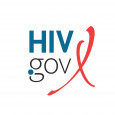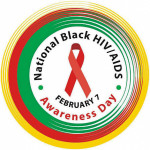This blog post is by Francisco Ruiz, MS, Director, Office of National AIDS Policy (ONAD), The White House
Recently, I was pleased to meet with more than 35 representatives of federal agencies engaged in implementing the National HIV/AIDS Strategy (NHAS). The NHAS Federal Implementation Workgroup (FIW) is comprised of representatives of the agencies that contributed to developing the Strategy and who share responsibility for its implementation.
Neera Tanden, Domestic Policy Advisor to President Biden, joined me in welcoming the NHAS FIW members, some of whom joined the meeting in person at the Eisenhower Executive Office Building and others who participated online. Director Tanden expressed gratitude to our federal partners for their work to develop, implement, and monitor progress on the NHAS. She encouraged continued work toward seamless coordination of HIV efforts across federal government partners, especially for efforts focusing on advancing equity, scaling up PrEP services, and better reaching populations that are disproportionately impacted by HIV.

Participants at the National HIV/AIDS Strategy (NHAS) Federal Implementation WorkgroupCourtesy of HIV.gov
During the meeting, we reviewed the latest national HIV data from CDC, which is being used to monitor the 21 NHAS indicators of progress. The data, from 2022, indicates that we are going in the right direction in most cases. But the progress is incremental, and it varies across jurisdictions and demographic groups, highlighting areas that require more focus from all of us. Discussing this data informs each agency’s ongoing efforts to implement the Strategy and accelerate our progress toward the NHAS goals. Soon, additional data that is being used to monitor some of the indicators will be published. Later this year, we anticipate sharing an update on our progress toward the NHAS goals.
Members from 16 different agencies and offices shared updates about their work to pursue the action items that they detailed in the NHAS Federal Implementation Plan. Among the things we heard about:
- The Department of Justice’s continued work on HIV services in the Federal Bureau of Prisons, which have resulted in very high rates (>96%) of viral suppression among people in custody who have HIV.
- Recent work by the Department of Justice’s Civil Rights Division addressing both health care discrimination and HIV criminalization.
- Work by the Substance Abuse and Mental Health Services Administration across several programs to advance integration of behavioral and physical health, including HIV, STI, and viral hepatitis services.
- The Department of Veterans Affairs’ work to expand syringe services programs.
- The integration of people with HIV into programing led by the HHS Administration on Community Living addressing social isolation and chronic disease self-management among older Americans.
- Technical assistance being offered by the Department of Housing and Urban Development to support communities in preparing for and swiftly responding to HIV outbreaks.
- New efforts within the Title X program to scale up HIV PrEP services offered at family planning clinics.
- CDC’s work to update guidelines on HIV screening in clinical settings which will help providers know where to focus screening for most impact.
- Continued annual increases in the number of HIV tests at health centers and analysis indicating that about 19% of recent HIV PrEP users are being served by health centers as they have worked to scale up PrEP services.
- Collaborative work by HRSA’s HIV/AIDS Bureau and CDC over the past year on community engagement and current work to synthesize the themes from 14 regional listening sessions that will be shared back with the community soon.
We also discussed initial plans to begin work on developing the 2026–2030 NHAS. The current Strategy continues through 2025. As we work together to develop the next Strategy, we will be reflecting on the progress made under the current one; considering how best to incorporate new tools, policies, and other assets to our work; and gathering input from state, tribal, and local partners and members of the HIV community. Among our first activities will be to hear from community members gathered at the upcoming National Ryan White Conference on HIV Care & Treatment as well as the U.S. Conference on HIV/AIDS. We will also solicit input through a Request for Information that will invite partners and community members to send their written recommendations to us. We anticipate the next NHAS would be published in late 2025.
I am grateful for the wisdom and enthusiasm shared by the members of the NHAS Federal Implementation Workgroup. I look forward to continuing our collaboration as we work together to accelerate our progress toward our national HIV goals.
This blog post was originally published July 29, 2024, on HIV.gov.








Comments
Comments